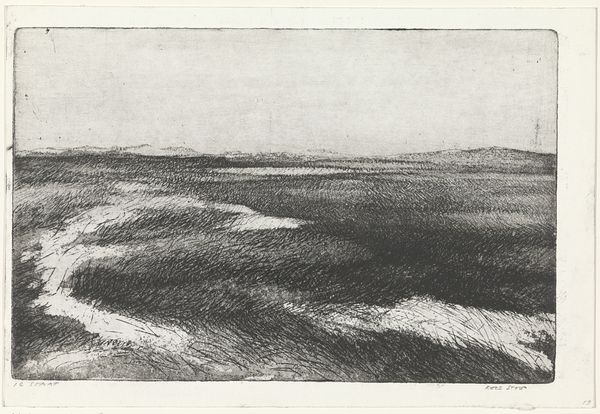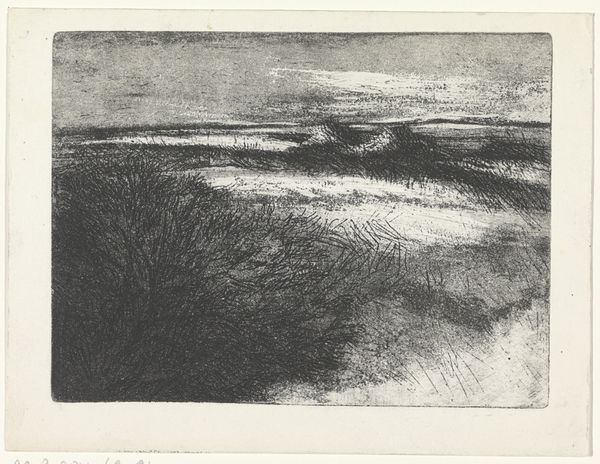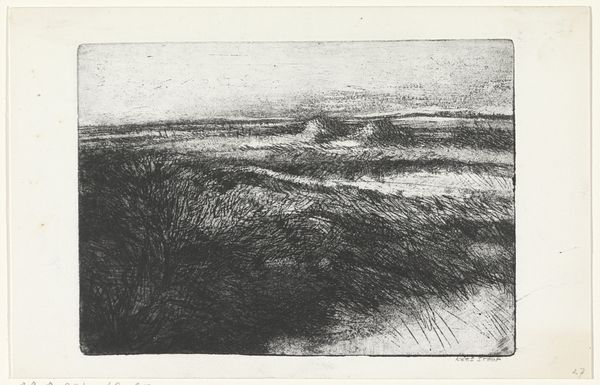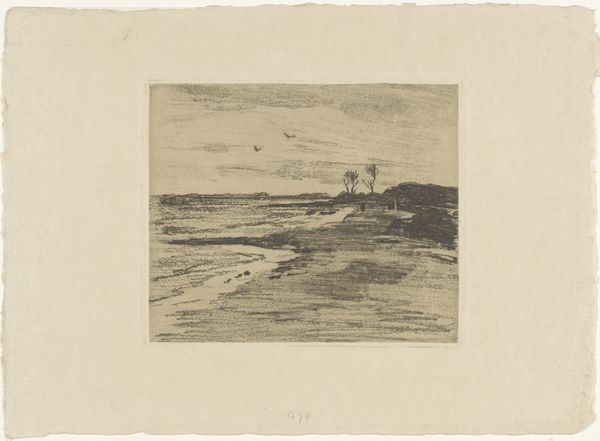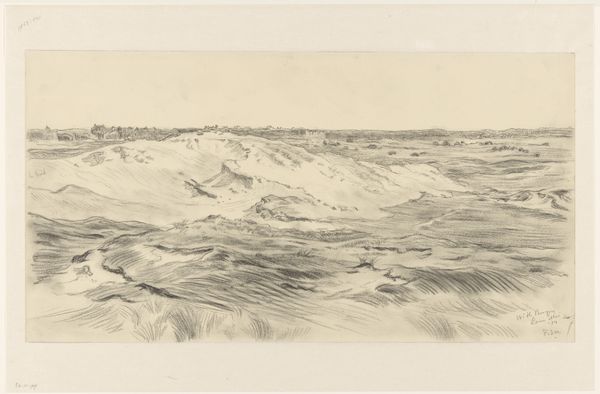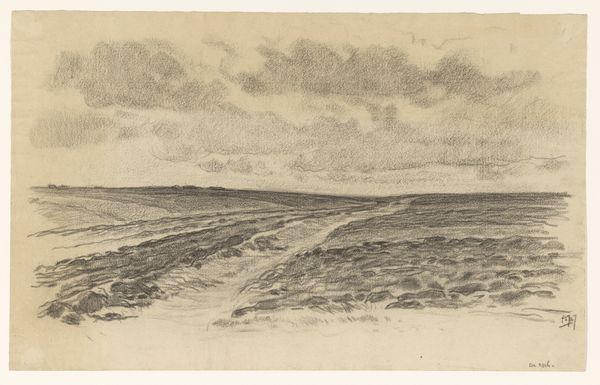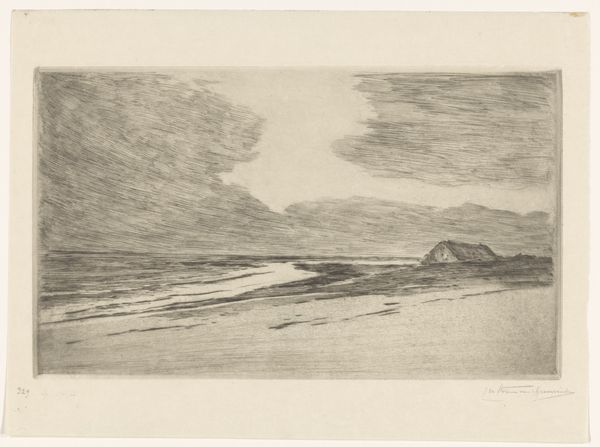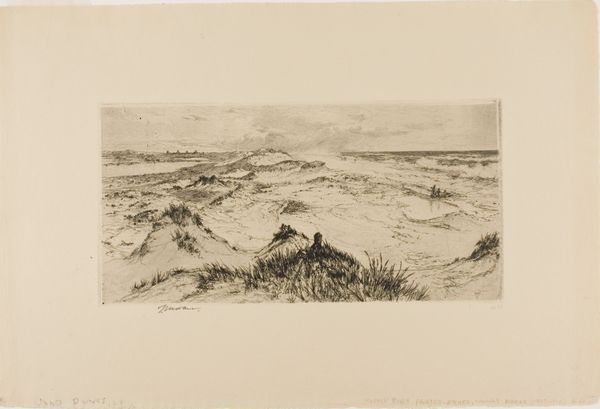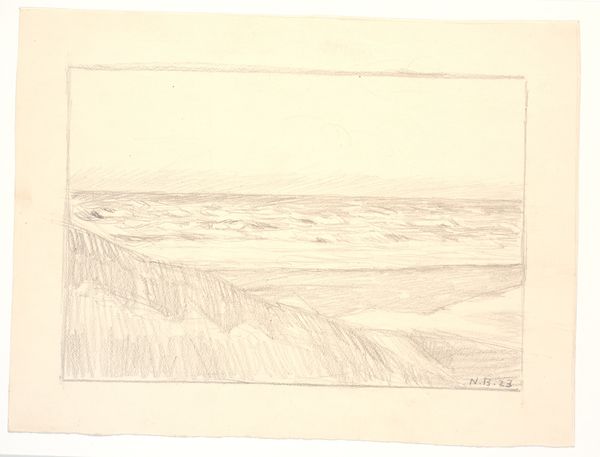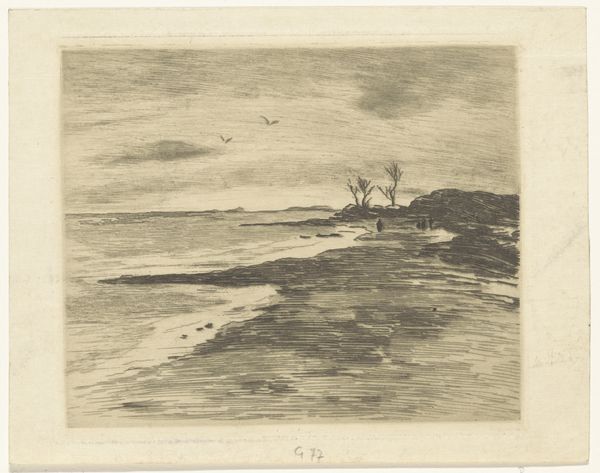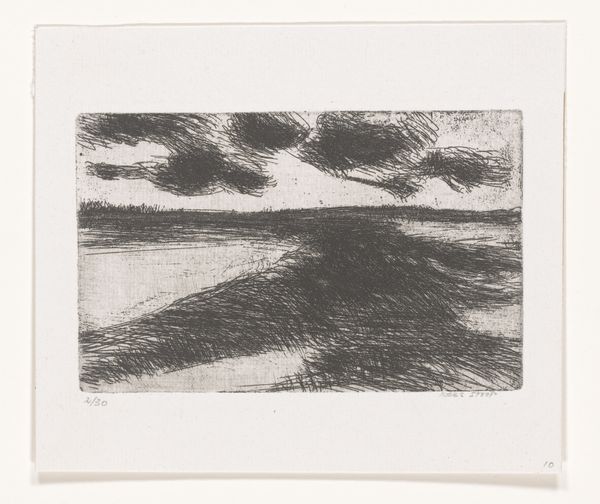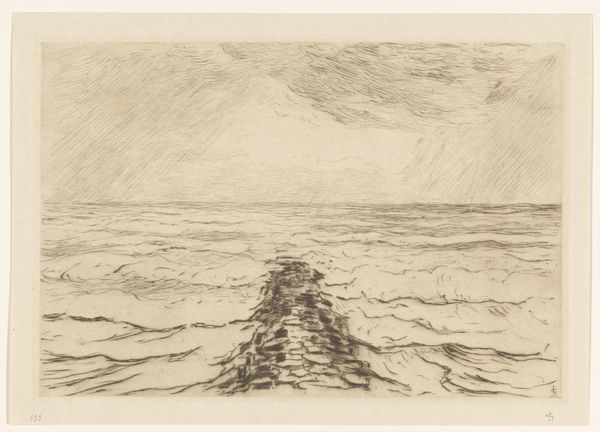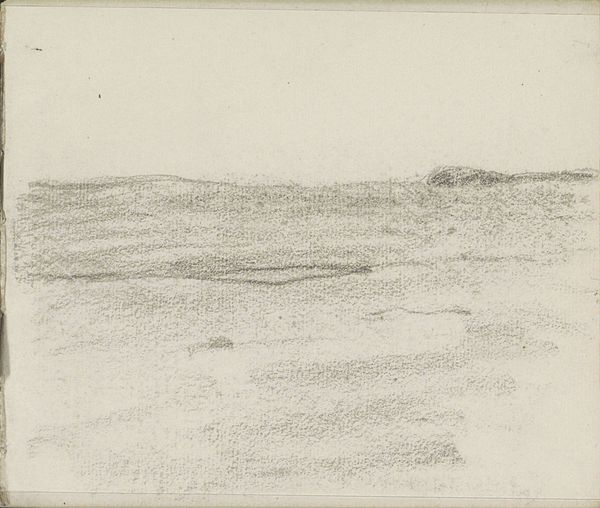
print, etching
# print
#
etching
#
landscape
#
realism
#
monochrome
Dimensions: height 130 mm, width 170 mm, height 82 mm, width 135 mm
Copyright: Rijks Museum: Open Domain
This is "Duinlandschap," or "Dune Landscape," by Kees Stoop. We don't know exactly when it was made. It's an etching, a printmaking technique that is reliant on the effects of acid on metal. To make an etching like this, the artist would first cover a metal plate with a waxy, acid-resistant ground. Using a sharp needle, they’d then draw an image, cutting through the ground to expose the metal. When the plate is dipped in acid, the drawn lines are "bitten" into the surface. The longer the plate sits in the acid, the deeper the lines become. The plate is then inked, and the surface wiped clean, leaving ink only in the etched lines. Finally, the plate is pressed against a sheet of paper, transferring the image. The resulting print bears the mark of this lengthy process, which speaks to the amount of labor involved in its production. Stoop would have repeated the process several times in order to produce this series. By drawing attention to the materials, techniques, and social context of Stoop’s printmaking, we gain a deeper understanding of its artistic and cultural value.
Comments
No comments
Be the first to comment and join the conversation on the ultimate creative platform.
